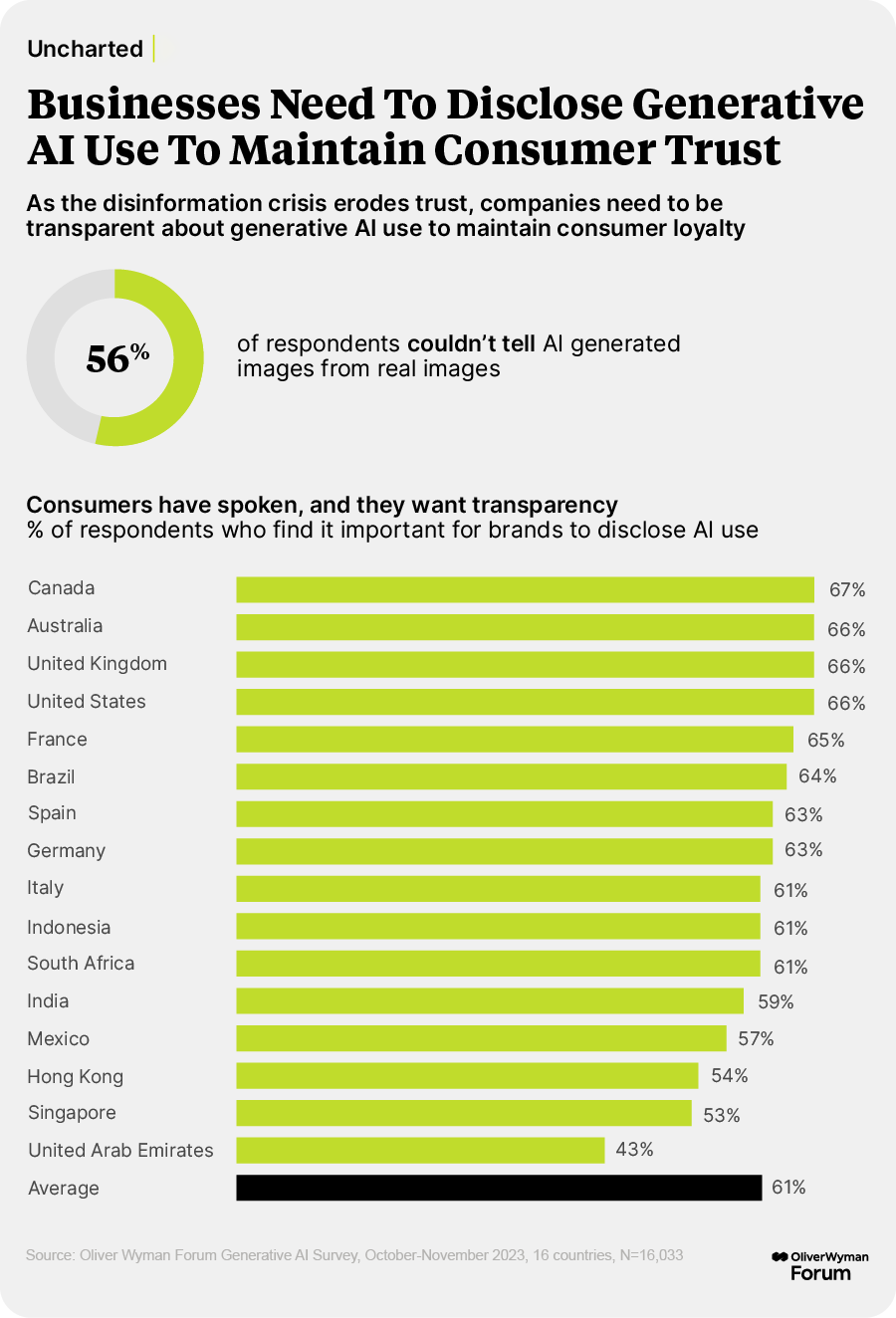The world has no shortage of climate goals. Most European companies have set reduction targets for greenhouse gas emissions, and the United States recently mandated climate-related disclosures that can shed light on carbon footprints, although those face legal and political challenges. Despite these efforts, global temperatures soared to a new record last year and greenhouse gas emissions continue to increase.
What’s lacking are practical measures that can turn good climate intentions into sustainable business models consistent with the Paris Agreement goal of halving emissions by 2030 and limiting global warming to 1.5 degrees Celsius.
Five pivotal actions are required from companies to drive tangible corporate progress on climate, according to new research by Oliver Wyman and CDP, a Europe-based nonprofit that promotes climate disclosures.
First, companies need to invest more heavily in decarbonization and green transition initiatives. They also need to develop and scale up low-carbon products, services, and technologies. Then companies need to drive decarbonization in their supply chains, engage with customers to incentivize them to limit emissions, and restructure core business processes like budgeting and performance frameworks to align with climate goals.
Companies can’t do this on their own. They need more supportive policies from governments in the way of tax credits and other incentives. And financial institutions need to provide greater flexibility to accommodate the size and long-term nature of many decarbonization investments.
Even in Europe, where the green transition is more advanced than elsewhere, most companies aren’t making sufficient progress, according to the research, which was based on a survey of companies representing 89% of Europe’s market capitalization. But one in five companies are making substantial progress — and forging a path that others can follow.
Show me the money
Europe’s best-performing industrial sector is power generation. Unlike many companies, electric utilities have developed a successful business model for renewable energy products, making investment in them a good growth strategy. Much of that success can be attributed to government subsidies during the early development of wind and solar power, which enabled those technologies to scale and become competitive with conventional power sources.
European utilities have been increasing investment in renewables, but they still look likely to fall almost $300 billion short of the more than $2 trillion needed to meet the European Union’s emissions reduction target for 2030. That shortfall threatens other industries’ progress because green energy holds the key to decarbonizing the global economy, from steel and autos to mining and chemicals.
One obstacle is the reluctance of the financial sector to provide enough capital. One-third of all European companies surveyed identified lack of access to capital as a problem in transition planning, according to the report. That percentage was over 50% for high-emitting industries like electric utilities.
Green transition projects don’t always fit easily in the existing risk models of most financial institutions; the projects tend to be large and have longer timelines than conventional investments. Some technologies being developed are not yet commercially viable, and the economics of the businesses can be dependent on government policy. And for many lenders, these projects represent first-time investments in areas where they lack a track record to assess risk.
Yet there are ways to overcome these obstacles. Some institutions are exploring blended financing models that include other sources of capital such as private equity, infrastructure funds, and development banks. Financial institutions also should revise their risk-management strategies and collaborate with governments to foster a more conducive environment for transition investments.
Green products, green suppliers, green consumers
Steelmakers also show more progress than other sectors on the green transition. That’s important because steel, like power, can have a flywheel effect and reduce emissions across many industries. The average car is 54% steel by weight, according to the American Iron and Steel Institute, so imagine the impact on emissions from substituting green steel for the conventional carbon-intensive product. Not surprisingly, some of the biggest investors in many green steel startups are car companies looking for a guaranteed future supply.
Steel, like power, is closer than most industries to developing a sustainable green business model, using technologies either already commercially available or in need of investment to reach commercial scale. The demand for green steel is expected to outpace the supply by 2035, in part because of government policies like the European Union’s Carbon Border Adjustment Mechanism, according to the report.
In the United States, the 2022 Inflation Reduction Act requires that renewable energy projects use 100% US-made steel to qualify for a 10% domestic content tax credit. That rule will automatically lower emissions given that 70% of US steel is made from scrap metal in less carbon-intensive electric arc furnaces.
An all-of-the-above strategy
Steel and power aren’t yet on track to meet Paris-compliant targets for a green transition by 2030, but they have a roadmap of how to get there with adequate investment and other measures. That’s also true for the auto industry, which enabled transport companies to score well on the five-factor framework. For automakers, the key to decarbonization progress will be ramping up production of electric vehicles and working with their supply chain and customers — responsible for 90% of the industry’s emissions — to choose green options.
The insufficient progress, even by sectors moving in the right direction, shows the need for more support for the transition from governments and the financial sector. While Europe has been a leader in many aspects of climate policy and regulation, other regions have taken bolder steps with incentives and industrial policy to accelerate investment and help industry get over the hump.
Time is short. No good strategy can be left behind if we want to put the global economy on a sustainable trajectory.
Technologies like artificial intelligence (AI) and flying taxis are poised to transform the way people get around while cities notorious for traffic jams are investing heavily in mass transit and micromobility. But for these solutions to have the greatest impact, they must be implemented sustainably and equitably, according to experts who participated in the Oliver Wyman Forum’s South by Southwest (SXSW) panel discussion on urban mobility.
Consider air taxis. With one company seeking regulatory approval to launch service in Paris for this summer’s 2024 Olympics, the technology may soon take flight into the mainstream. To get there, though, providers must convince regulators that the technology is safe and engage with local communities to win their support, said Bryan Willows, Americas director of advanced air mobility at Bristow Group.
“The last thing we or consumers want is for us to build a vertiport in their backyard and have them unable to see the benefit of it,” Willows said.
Enabling mobility for all is critical
Los Angeles is investing in terrestrial improvements for its staging of the 2028 Summer Games to accommodate a flood of tourists who might otherwise aggravate the city’s notorious gridlock. Metro, Los Angeles County’s transit authority, is expanding metro lines, active mobility, and multimodal projects under a 30-year program.
But increasing ridership also requires raising awareness of new opportunities and providing seamless journey planning with a single app, says Heather Repenning, executive officer for sustainability policy for Metro. “We want to make it easier to navigate between different modes that are available, help people understand their options to travel, pay in one place, and know they can use their device to do it.”
Collaboration and dialogue pave the way
San Francisco lies on the cutting edge of mobility innovation, especially autonomous vehicle technology. But innovation for innovation’s sake is not the ideal road to take, explained Tilly Chang, executive director of the San Francisco County Transportation Authority.
Cities should harness new technologies to serve their broader goals. Ensuring the community and companies have an open dialogue can help ensure the benefits are shared equitably and serve the public good.
“We need companies to hear directly from city agencies, nonprofits, and community-based organizations,” Chang said. “From ages eight to 80, nobody is shy in San Francisco. Everyone has an opinion.”
For more SXSW takeaways, read here.

Executive Director, San Francisco County Transportation Authority
“How do we harness AI to meet our city goals? Are AVs just robotaxis that will replace regular taxis? That remains to be seen.”
Every month, we highlight a key piece of data drawn from three years' worth of consumer research.


